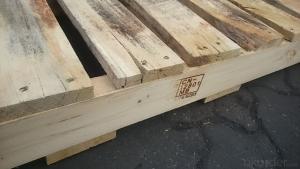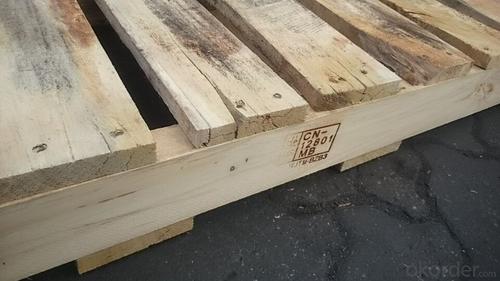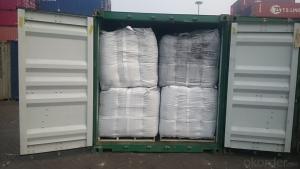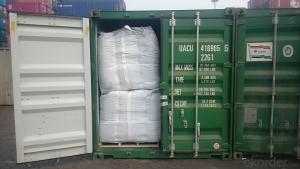Used in EAF as Charging Carbon for Steel Mills
- Loading Port:
- Tianjin
- Payment Terms:
- TT OR LC
- Min Order Qty:
- 21 m.t.
- Supply Capability:
- 6000 m.t./month
OKorder Service Pledge
OKorder Financial Service
You Might Also Like
Introduction:
Calcined anthracite can be called carbon additive, carbon raiser, recarburizer, injection coke, charging coke, gas calcined anthracite.
Carbon Additive/Calcined Anthracite Coal may substitute massively refinery coke or graphite. Meanwhile its cost is much less than the refinery coke and graphite. Carbon Additive is mainly used in electric steel ovens, water filtering, rust removal in shipbuilding and production of carbon material.
It has good characteristics with low ash, low resistivity, low sulphur, high carbon and high density. It is the best material for high quality carbon products. It is used as carbon additive in steel industry or fuel.
Features:
Best quality Taixi anthracite as raw materials through high temperature calcined at 800-1200 ℃ by the DC electric calciner with results in eliminating the moisture and volatile matter from Anthracite efficiently, improving the density and the electric conductivity and strengthening the mechanical strength and anti-oxidation, It has good characteristics with low ash, low resistivity, low carbon and high density. It is the best material for high quality carbon products, it is used as carbon additive in steel industry or fuel.
Specifications:
F.C.% | 95MIN | 94MIN | 93MIN | 92MIN | 90MIN | 85MIN | 84MIN |
ASH % | 4MAX | 5MAX | 6 MAX | 6.5MAX | 8.5MAX | 12MAX | 13MAX |
V.M.% | 1 MAX | 1MAX | 1.0MAX | 1.5MAX | 1.5MAX | 3 MAX | 3 MAX |
SULFUR % | 0.3MAX | 0.3MAX | 0.3MAX | 0.35MAX | 0.35MAX | 0.5MAX | 0.5MAX |
MOISTURE % | 0.5MAX | 0.5MAX | 0.5MAX | 0.5MAX | 0.5MAX | 1MAX | 1MAX |
Pictures



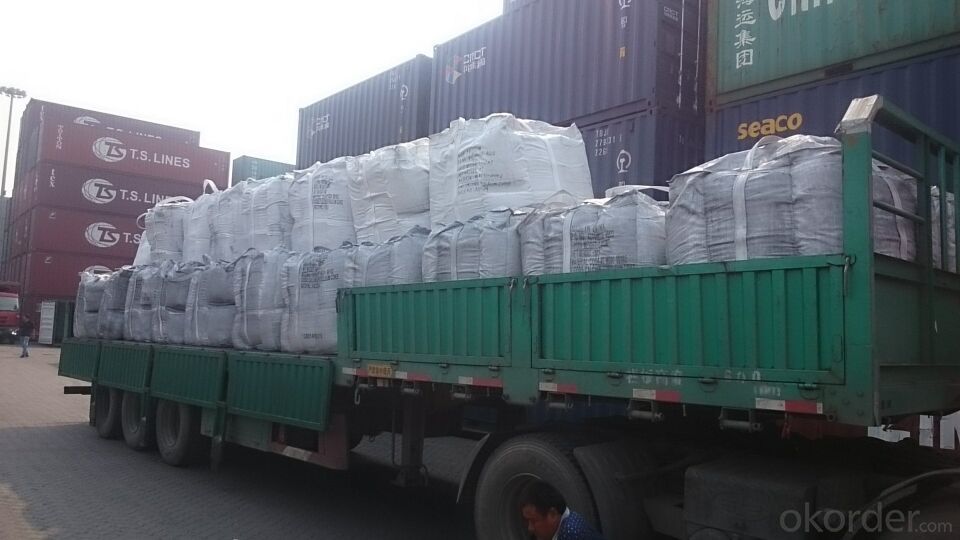
FAQ:
Packing:
(1). Waterproof jumbo bags: 800kgs~1100kgs/ bag according to different grain sizes;
(2). Waterproof PP woven bags / Paper bags: 5kg / 7.5kg / 12.5kg / 20kg / 25kg / 30kg / 50kg small bags;
(3). Small bags into jumbo bags: waterproof PP woven bags / paper bags in 800kg ~1100kg jumbo bags.
Payment terms
20% down payment and 80% against copy of B/L.
Workable LC at sight,
- Q: How is carbon formed?
- Various natural processes contribute to the formation of carbon, primarily the life and death cycle of living organisms. The process of photosynthesis in plants initiates carbon formation, as they utilize sunlight, water, and atmospheric carbon dioxide to produce glucose. This glucose is then transformed into other organic compounds, including carbohydrates, fats, and proteins, which are the fundamental constituents of all living beings. When plants and animals perish, decomposers like fungi and bacteria break down their remains and waste materials. During this decomposition, carbon is released back into the environment in the form of carbon dioxide or methane gas. Additionally, some organic matter may become buried beneath sediment layers, where it undergoes fossilization over millions of years. Through a combination of heat and pressure, this fossilization process converts the organic matter into fossil fuels like coal, oil, and natural gas, which are abundant sources of carbon. In addition to biological processes, carbon can also form through geological processes. Volcanic eruptions discharge carbon dioxide into the atmosphere, and over extended periods, this carbon dioxide can dissolve in water and react with minerals to create rocks like limestone. These rocks function as carbon sinks, storing substantial amounts of carbon over geological timescales. In general, the formation and cycling of carbon involve a complex interaction between biological and geological processes, significantly contributing to the equilibrium of carbon in the Earth's atmosphere and supporting life as we currently understand it.
- Q: What is the carbon content of different fuels?
- The carbon content of different fuels can vary significantly depending on their composition and source. However, in general, fossil fuels such as coal, oil, and natural gas have high carbon content. Coal, which is primarily composed of carbon, typically contains around 60-80% carbon. This makes coal a highly carbon-intensive fuel and a major contributor to greenhouse gas emissions when burned. Crude oil and petroleum products, such as gasoline and diesel, also have high carbon content, ranging from 80-90%. When these fuels are burned, they release significant amounts of carbon dioxide (CO2) into the atmosphere. Natural gas, consisting mainly of methane (CH4), has a lower carbon content compared to coal and oil. Methane itself is composed of one carbon atom and four hydrogen atoms, resulting in a carbon content of around 75%. Although natural gas emits less CO2 when burned compared to coal and oil, methane itself is a potent greenhouse gas, which can contribute to climate change. Renewable fuels, such as biofuels, have varying carbon contents depending on their source. Biofuels are derived from organic materials, such as plants and agricultural waste, and can have carbon contents similar to fossil fuels. However, since biofuels are derived from recently living organisms, the carbon dioxide emitted during their combustion is considered part of the natural carbon cycle and does not contribute to long-term increases in atmospheric CO2 levels. Overall, the carbon content of different fuels is an important factor in determining their environmental impact and contribution to climate change. Transitioning to low-carbon or carbon-neutral fuels is crucial in reducing greenhouse gas emissions and mitigating the effects of climate change.
- Q: How do fossil fuels release carbon into the atmosphere?
- Fossil fuels release carbon into the atmosphere through the process of combustion. When fossil fuels like coal, oil, and natural gas are burned for energy production, carbon dioxide (CO2) is released as a byproduct. This CO2 is a greenhouse gas that traps heat in the Earth's atmosphere, contributing to global warming and climate change.
- Q: What are the consequences of increased carbon emissions on coastal regions?
- Increased carbon emissions have significant consequences on coastal regions. One of the most alarming consequences is the rise in sea levels. As carbon dioxide and other greenhouse gases trap heat in the atmosphere, they contribute to the warming of the planet. This leads to the melting of glaciers and polar ice caps, causing sea levels to rise. Higher sea levels pose a threat to coastal regions as they can result in increased flooding, erosion, and the loss of coastal ecosystems. In addition to rising sea levels, increased carbon emissions also contribute to ocean acidification. When carbon dioxide is absorbed by seawater, it forms carbonic acid, which lowers the pH of the ocean. This decrease in pH has detrimental effects on marine life, particularly on coral reefs and shellfish. Acidic waters make it difficult for coral reefs to build their calcium carbonate structures, leading to their bleaching and eventual death. Similarly, shellfish such as oysters, clams, and mussels struggle to develop their shells in more acidic waters, impacting their survival and the entire coastal food chain. Furthermore, higher levels of carbon emissions contribute to the intensification of storms and extreme weather events. Rising temperatures in coastal regions can lead to more frequent and severe hurricanes, cyclones, and storm surges. These events can cause extensive damage to coastal infrastructure, including homes, businesses, and critical infrastructure like roads and power lines. The increased frequency of storms also puts coastal communities at a higher risk of displacement and loss of livelihoods. Finally, increased carbon emissions contribute to global warming, which in turn leads to higher air temperatures. The warming of coastal regions can have adverse effects on the overall ecosystem. For instance, warmer waters can lead to the migration or extinction of certain species, disrupting the delicate balance of coastal ecosystems. It can also impact the health and productivity of fisheries, affecting the livelihood of communities reliant on fishing. In conclusion, increased carbon emissions have far-reaching consequences on coastal regions. Rising sea levels, ocean acidification, intensified storms, and the overall warming of coastal ecosystems pose significant threats to the environment, economies, and communities in these areas. It is crucial to reduce carbon emissions and take proactive measures to mitigate these consequences and protect our coastal regions for future generations.
- Q: How does carbon affect the formation of permafrost thawing?
- Carbon can have a significant impact on the formation of permafrost thawing. Permafrost is a layer of frozen soil, rock, and organic matter that remains at or below freezing for at least two consecutive years. It acts as a natural carbon sink, storing large amounts of organic carbon from dead plants and animals that have accumulated over thousands of years. When permafrost thaws, this stored carbon starts to decompose, releasing greenhouse gases such as carbon dioxide and methane into the atmosphere. The carbon released from permafrost thawing contributes to the overall increase in greenhouse gas concentrations, exacerbating climate change. Additionally, as permafrost thaws, it becomes more vulnerable to erosion and subsidence, leading to changes in the landscape and the release of even more carbon. This process can create a positive feedback loop, where the released carbon further accelerates permafrost thawing, resulting in more carbon emissions. Furthermore, permafrost thawing can also impact the stability of infrastructure built on frozen ground, such as roads, buildings, and pipelines, leading to significant economic and environmental consequences. In summary, carbon plays a crucial role in the formation and thawing of permafrost. The release of carbon from thawing permafrost contributes to climate change, accelerates the thawing process, and has various environmental and economic impacts. Addressing carbon emissions and finding ways to mitigate permafrost thawing is essential to combatting climate change and preserving the stability of these frozen ecosystems.
- Q: How does carbon impact the prevalence of landslides?
- Carbon, in the form of carbon dioxide (CO2), plays a significant role in impacting the prevalence of landslides. One of the primary ways carbon impacts landslides is through its contribution to climate change. Increased levels of CO2 in the atmosphere result in global warming, which alters weather patterns, precipitation levels, and the overall stability of slopes and landforms. Climate change caused by carbon emissions leads to more frequent and intense rainfall events in many regions. This increased rainfall can saturate soil and increase groundwater levels, making slopes more susceptible to landslides. Additionally, intense rainfall can erode the soil, further weakening the stability of slopes and increasing the likelihood of landslides. Another way carbon impacts the prevalence of landslides is through its impact on vegetation. Carbon dioxide is a vital component of photosynthesis, the process by which plants convert sunlight into energy. However, elevated levels of CO2 can affect plant growth and productivity. Plants play a crucial role in stabilizing slopes and preventing erosion through their extensive root systems. When carbon levels are high, plants may experience reduced growth, which weakens their ability to anchor the soil and protect against landslides. Moreover, carbon emissions contribute to the melting of glaciers and permafrost, which can trigger landslides in mountainous regions. Glaciers act as natural stabilizers, holding large amounts of rock and soil in place. When glaciers melt due to global warming, the sudden release of this material can trigger landslides and result in devastating consequences. In summary, carbon impacts the prevalence of landslides primarily through its contribution to climate change and its subsequent effects on weather patterns, vegetation growth, and the stability of slopes. Addressing carbon emissions and mitigating climate change is essential in reducing the occurrence and severity of landslides.
- Q: How does carbon impact ocean acidity?
- Ocean acidification is caused by carbon, which impacts the acidity of the ocean. When seawater absorbs carbon dioxide (CO2) from the atmosphere, it reacts with water molecules and forms carbonic acid. This process lowers the pH levels of the ocean, making it more acidic. Human activities, including burning fossil fuels, deforestation, and industrial processes, are the primary sources of carbon dioxide in the atmosphere. As these activities increase the concentration of CO2 in the atmosphere, more of it is absorbed by the oceans. The increase in acidity has negative effects on marine life. Organisms with calcium carbonate shells, such as coral reefs, shellfish, and some plankton species, are particularly vulnerable to ocean acidification. The higher acidity makes it difficult for these organisms to build and maintain their shells, resulting in reduced growth rates and increased mortality. Ocean acidification also disrupts the entire marine food web. It upsets the balance between predators and prey, as some plankton species struggle to develop and survive in acidic conditions. This can have a ripple effect on the entire ecosystem, affecting fish populations, marine mammals, and even humans who rely on seafood for sustenance. Furthermore, ocean acidification has significant economic consequences. Industries like commercial fisheries and tourism, which depend on healthy marine ecosystems, can suffer from the decline in fish populations and the degradation of coral reefs. To mitigate the impacts of carbon on ocean acidity, it is crucial to reduce carbon dioxide emissions and shift towards cleaner and more sustainable energy sources. Measures like creating marine protected areas and implementing sustainable fishing practices can also help protect and restore marine ecosystems, thereby mitigating the effects of ocean acidification.
- Q: Carbon injection molding machine heating several degrees
- Polycarbonate (PC) is a colorless and transparent engineering plastics, the impact strength is high, the use of a wide temperature range, good creep resistance, electrical insulation and dimensional stability; the disadvantage is sensitive to the gap, environmental stress cracking resistance, with metal insert molding products is difficult.Polycarbonate, English name Polycarbonate, referred to as PC. PC is a kind of amorphous, odorless, non-toxic, highly transparent colorless or slightly yellow thermoplastic engineering plastics, has excellent physical and mechanical properties, especially excellent shock resistance, tensile strength, bending strength, compressive strength and high creep; small size stability; has good heat resistance and low temperature resistance and with mechanical properties, stable in a wide range of temperature dimensional stability, electrical properties and flame retardant properties, can be used for a long time at -60~120 deg.c; no obvious melting point, molten at 220-230 DEG C; because the molecular chain rigidity, resin melt viscosity; low water absorption, low shrinkage, size high precision, good dimensional stability, permeability of films is small; self extinguishing materials; stable to light, but not UV resistance, good weather resistance; oil resistance, acid and alkali resistance, non oxidizing acids and amines, ketones, solution Chlorinated hydrocarbons and aromatic solvents are prone to hydrolysis and cracking in water for a long time. The disadvantage is that they are prone to stress cracking due to poor fatigue resistance, poor solvent resistance and poor wear resistance.
- Q: What are carbapenem antibiotics?
- The home has been listed on the varieties of imipenem, meropenem, panipenem, faropenem, ertapenem, biapenem.Carbapenem antibiotics are the most widely antibacterial and atypical antibiotics with the strongest antibacterial activity.
- Q: How does carbon affect ocean acidification?
- Various human activities, such as burning fossil fuels and deforestation, release carbon dioxide (CO2) into the atmosphere. This CO2 is a greenhouse gas that, when absorbed by the oceans, leads to a process called ocean acidification. When CO2 dissolves in seawater, it reacts with water molecules and forms carbonic acid. This reaction increases the concentration of hydrogen ions (H+), resulting in a decrease in pH levels and making the seawater more acidic. This decrease in pH is a key characteristic of ocean acidification. As the ocean becomes more acidic, it disrupts the delicate chemical balance that many marine organisms rely on for survival and growth. Organisms like corals, shellfish, and phytoplankton use calcium carbonate to build their shells or skeletons, but increased acidity hampers their ability to do so. Ocean acidification also impacts the growth and development of marine plants and animals. For instance, changes in pH levels can affect the ability of larvae from certain marine species to form strong shells or skeletons. Additionally, acidified waters can disrupt the metabolism and reproductive processes of many marine organisms. The consequences of ocean acidification extend beyond individual organisms. Entire ecosystems, such as coral reefs, face threats due to increasing acidity. Coral reefs provide habitat for numerous species and are vital to marine biodiversity. However, the more acidic conditions make it challenging for corals to build and maintain their calcium carbonate structures, resulting in coral bleaching and degradation of reef systems. Moreover, ocean acidification can have cascading effects on other marine organisms and food webs. For example, changes in the growth and survival rates of phytoplankton, a primary food source for many marine species, can disrupt the entire food chain, impacting fish populations and ultimately affecting human communities that rely on seafood for sustenance and livelihoods. In conclusion, the rise in carbon dioxide emissions contributes to ocean acidification, which alters the chemistry of the oceans and poses significant threats to marine life and ecosystems. Understanding and addressing the causes and impacts of ocean acidification are essential for the long-term health and sustainability of our oceans.
Send your message to us
Used in EAF as Charging Carbon for Steel Mills
- Loading Port:
- Tianjin
- Payment Terms:
- TT OR LC
- Min Order Qty:
- 21 m.t.
- Supply Capability:
- 6000 m.t./month
OKorder Service Pledge
OKorder Financial Service
Similar products
Hot products
Hot Searches
